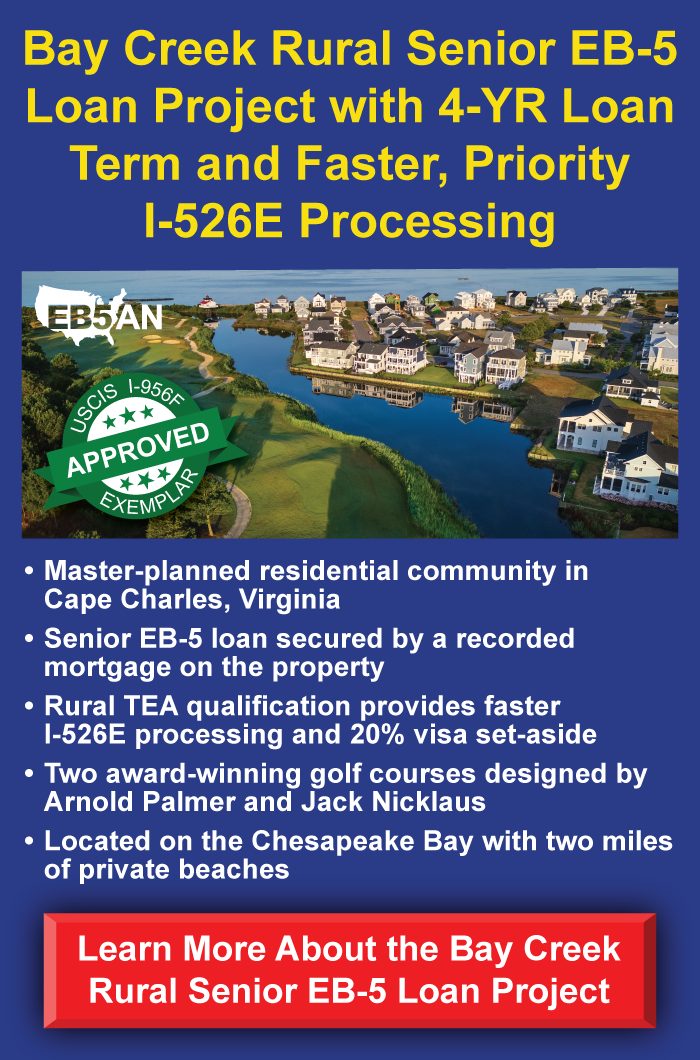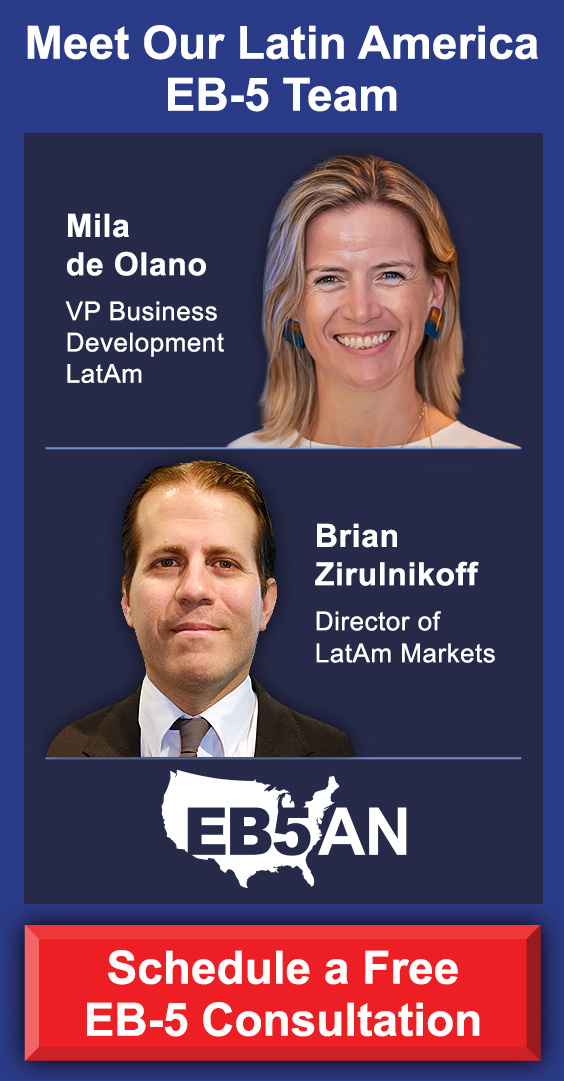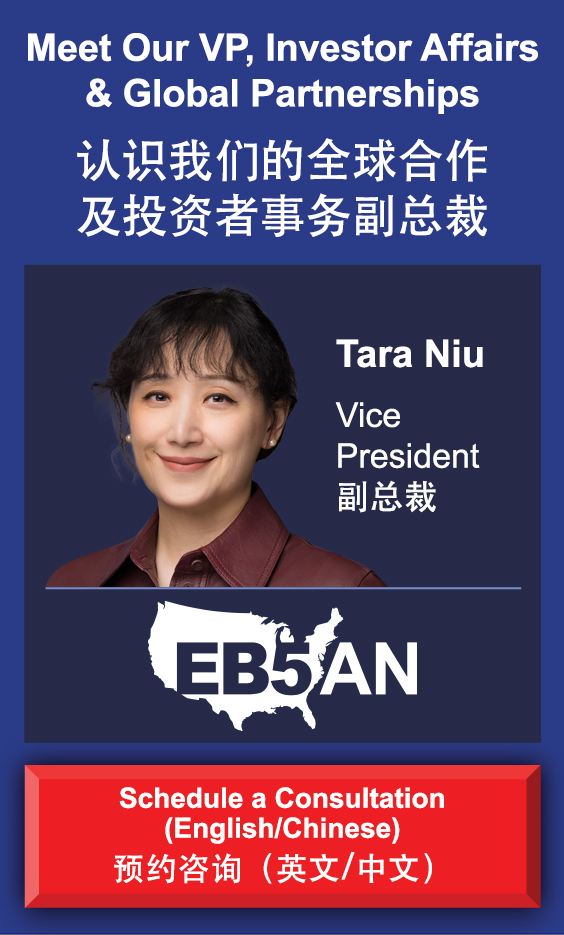For foreign nationals interested in moving to the United States, the EB-5 Immigrant Investor Program is an attractive route that allows individuals to gain U.S. permanent residency, commonly known as a Green Card, by making an investment in a U.S. new commercial enterprise. However, what often gets overlooked is the potential of the EB-5 visa to fast-track the process to U.S. citizenship compared to other employment-based visas.
In this article, we’ll explore how the EB-5 visa works, why it might provide a faster path to citizenship, and the urgency around securing this opportunity before any changes to the program take effect.
What Is the EB-5 Immigrant Investor Program?
How Does the EB-5 Path to Citizenship Compare to Other Employment-Based Visas?
The Unique Advantage of the EB-5 Visa
EB5AN Can Guide You Through Your Green Card Process
What Is the EB-5 Immigrant Investor Program?
The EB-5 visa is a U.S. immigrant visa that allows foreign nationals to obtain a Green Card by making a significant financial investment in a U.S. business. The program requires an investment of at least $1,050,000 in a new commercial enterprise that creates at least 10 full-time jobs for U.S. workers. However, in targeted employment areas (TEAs), the required investment amount is reduced to $800,000.
The EB-5 program has become one of the most popular pathways to U.S. permanent residency, as it provides investors and their immediate family members (spouse and children under the age of 21) the opportunity to live and work in the United States, and eventually become U.S. citizens. Once the investment is made, if their application is approved, the investor is granted a two-year conditional Green Card, and after meeting certain requirements, the conditions can be removed to secure a permanent Green Card.
How Does the EB-5 Path to Citizenship Compare to Other Employment-Based Visas?
While the EB-5 visa provides a direct route to a Green Card, the speed at which you can transition to citizenship is a key question for many prospective investors. This Green Card pathway can often be faster compared to other employment-based visas, as it can start the five-year clock to U.S. citizenship much earlier.
Other Employment-Based Visas
Let’s briefly examine a few common employment-based visa types to compare their paths to U.S. citizenship.
H-1B Visa (Specialty Occupation Workers)
The H-1B visa is one of the most well-known temporary work visas. It allows foreign workers with specialized knowledge or a bachelor’s degree (or higher) to work for a U.S. employer in a specific role. While the H-1B visa allows individuals to live and work in the U.S., it is a temporary, nonimmigrant visa, typically valid for up to six years (with an initial three-year duration, extendable). This visa does not provide its holders with a direct path to permanent residency or citizenship. To apply for a Green Card, an H-1B holder must go through a multi-step process, which can take several years, depending on the applicant’s country of origin and the demand for Green Cards.
L-1 Visa (Intra-Company Transferee)
Another nonimmigrant visa, the L-1 visa allows executives, managers, and employees with specialized knowledge to transfer from a foreign branch of their company to a U.S. office. The process of applying for a Green Card can take several years for L-1 visa holders, especially if the applicant comes from a country with high demand for Green Cards.
EB-2 and EB-3 Visas (Skilled Workers and Professionals)
The EB-2 and EB-3 visas are two types of employment-based immigrant visas. The EB-2 is for individuals with advanced degrees or exceptional abilities, while the EB-3 is for skilled workers and professionals with a bachelor’s degree or equivalent experience. While they do provide a direct pathway to Green Cards and eventual citizenship, this process can take several years, and delays are common for applicants from countries with high demand for employment-based Green Cards, such as India and China.
The Unique Advantage of the EB-5 Visa
Unlike the above-mentioned employment-based visas, the EB-5 visa provides a unique pathway to U.S. permanent residency that can lead to citizenship, especially if the investor meets certain criteria. Here’s how:
The Role of Rural TEA Investments
One of the key advantages of the EB-5 program is the potential for faster processing, especially when investing in a rural TEA. The U.S. government designates certain areas as targeted employment areas (TEAs) to encourage investment in rural or high-unemployment regions. Investors who choose these locations qualify for the lower investment amount of $800,000. They also benefit from reserved visa set-asides, which help them avoid the long backlogs seen in the traditional “unreserved” EB-5 category. Rural TEA investors, in particular, enjoy priority processing—often resulting in a faster path to a Green Card and starting the residency process that leads to U.S. citizenship, even for applicants from high-demand countries like India and China.
Concurrent Adjustment of Status
For investors already in the U.S. on a different visa, such as an H-1B or L-1, the EB-5 program allows for concurrent adjustment of status. This means that investors can apply for their Green Card while still living and working in the U.S. on their existing visa, rather than having to leave the U.S. to process the Green Card application abroad. And meanwhile, they can apply for an employment authorization document and advance parole, which would allow them to work for any employer in the U.S. and travel outside the country while they are waiting for their Green Card approval. This can significantly speed up the entire process, allowing investors and their families to remain in the U.S. throughout their Green Card journey.
Once an investor receives their initial Green Card through the EB-5 program, they are on the path to U.S. citizenship. From the moment they obtain their conditional Green Card—which many EB5AN investors have secured in under 12 months—they become eligible to apply for citizenship after just five years.
This offers a major advantage over other employment-based visa holders, who often face long delays in getting a Green Card and may have to wait many years before they can apply for citizenship.
Why the Window Might Close Soon
It’s important to note that potential backlogs in the Visa Bulletin—particularly for applicants from high-demand countries such as China and India—may soon become a concern for new EB-5 investors. These backlogs can delay the processing times for Green Card applications, meaning that even if an investor meets the requirements, they might have to wait for a longer time before their application is processed. If the EB-5 program faces backlogs in reserved set-aside categories, it could lengthen the time to permanent residency and U.S. citizenship.
For those looking to take advantage of the current benefits of the EB-5 visa, such as the priority processing for rural TEAs and the ability to apply through concurrent filing, it is crucial to act soon before any new policies or backlogs complicate the process.
EB5AN Can Guide You Through Your Green Card Process
For international investors considering a pathway to U.S. citizenship, the EB-5 visa offers one of the fastest routes, especially if the investment is made in a rural TEA and the investor is able to take advantage of concurrent adjustment of status. With the potential to qualify for U.S. citizenship just five years after obtaining permanent residency, the EB-5 program stands out as a unique opportunity compared to other employment-based visas.
However, prospective investors should keep in mind that securing an investment now could lead to faster processing times and the opportunity to obtain U.S. citizenship sooner. To successfully manage the complexities of the process and make well-timed decisions, it’s best to work with experienced, reputable industry professionals.
EB5AN has helped more than 2,300 families from 70+ countries become lawful permanent residents of the United States. Our team has more than a decade of experience and offers clients first-rate, low-risk EB-5 regional center projects with a 100% USCIS project approval rate.
If you would like to know more about your path to U.S. citizenship, book a free call with our expert team today.










